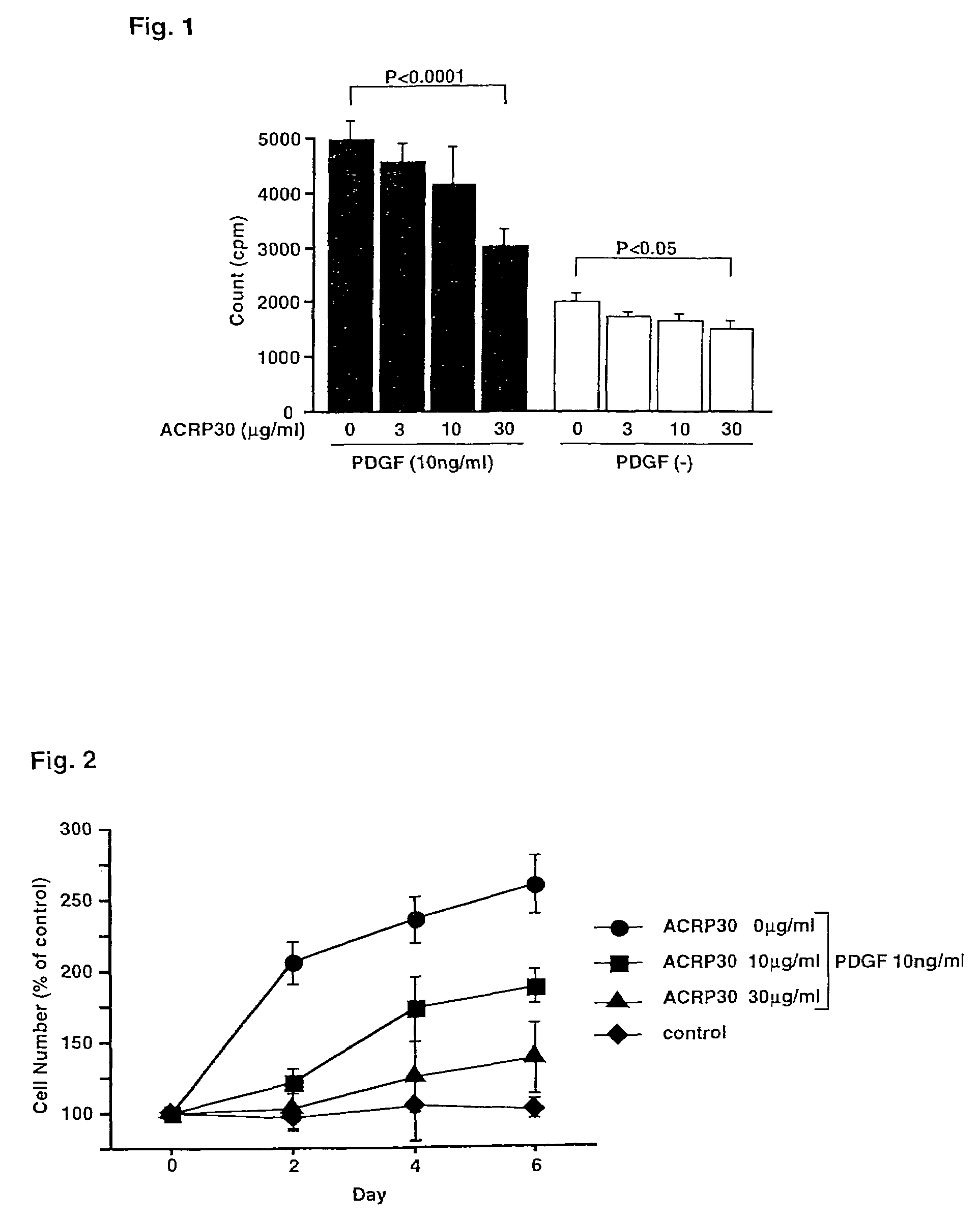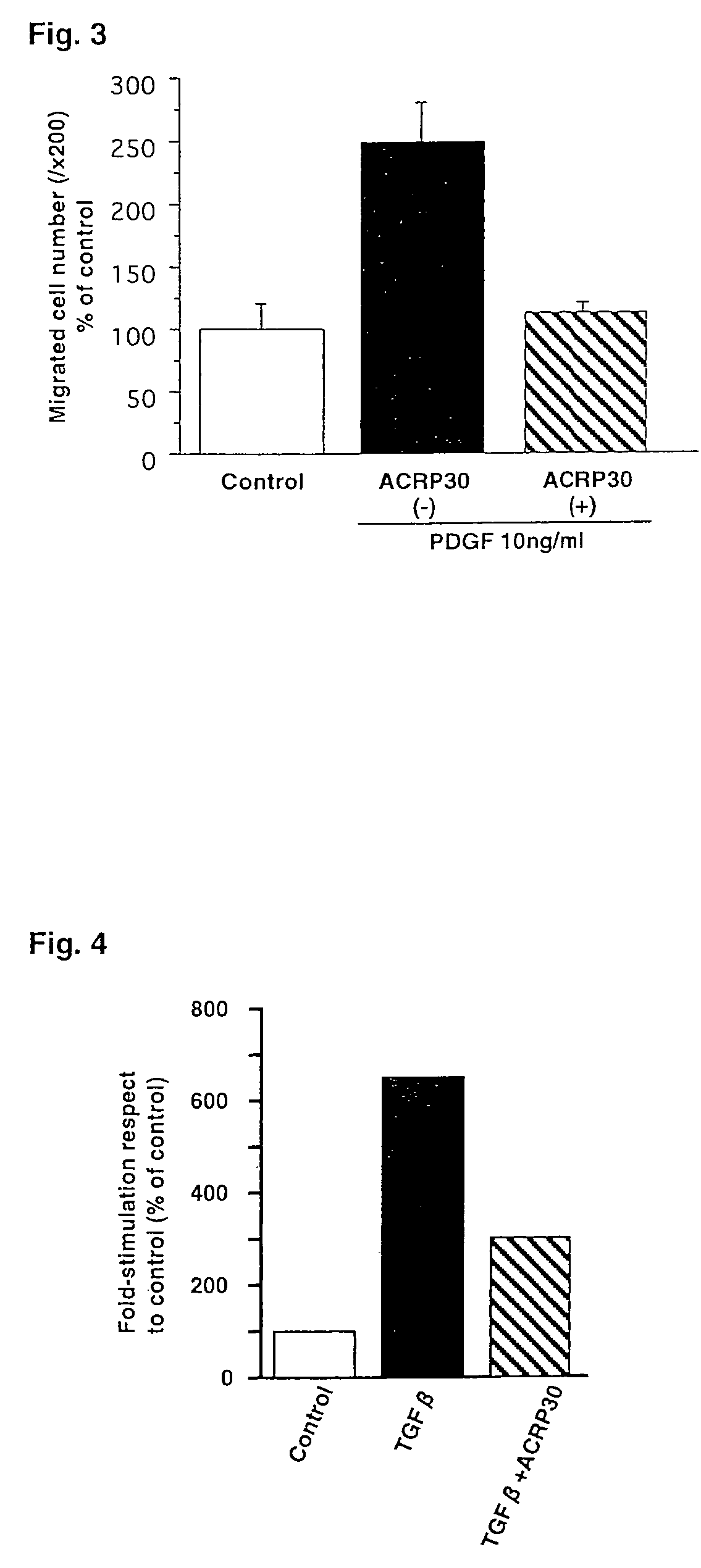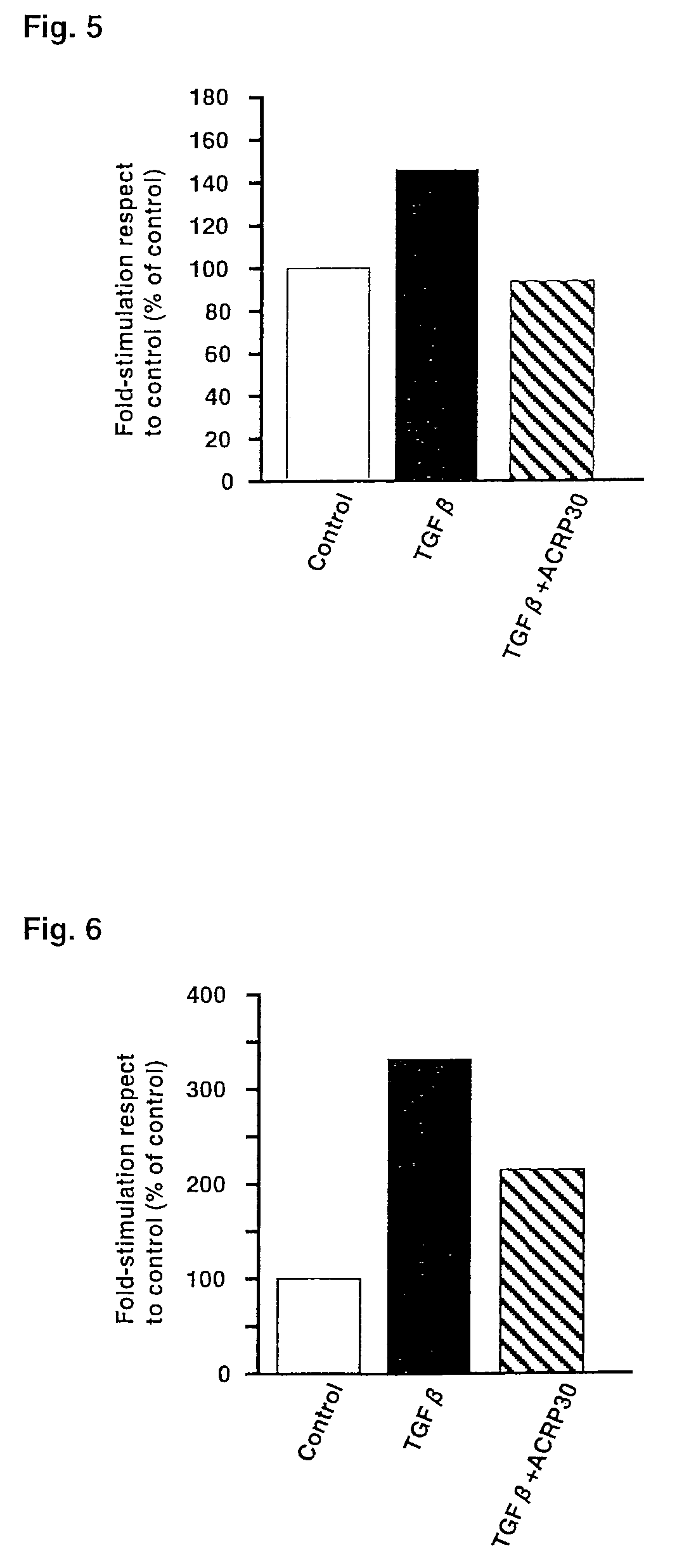Liver generation promoter
a liver and promoter technology, applied in the direction of peptide/protein ingredients, peptide sources, metabolism disorders, etc., can solve the problem of suppressing normal hepatocyte regeneration, and achieve the effect of suppressing the expression of tg
- Summary
- Abstract
- Description
- Claims
- Application Information
AI Technical Summary
Benefits of technology
Problems solved by technology
Method used
Image
Examples
experiment 1
1. Materials and Methods
Separation of Rat Hepatic Stellate Cell (RHSC)
[0032]A male SD rat of 8 weeks old was anesthetized with Nembutal and subjected to laparotomy, and the portal vein was cannulated. The liver is digested first by the perfusion with Ca2+and Mg2+-free Hanks solution followed by the perfusion with collagenase solution, and the hepatocytes were removed by centrifuging at a low speed and sieved through a mesh to obtain non-parenchymal cell suspension. Then the hepatic stellate cells were isolated using an elutriation rotor (3250 rpm / mm, 18 ml / min). The resultant stellate cells were seeded onto a plastic dish, subcultured by a trypsin / EDTA method, and the 3rd to 5th passages were employed in the following experiments.
[0033]The culture medium was DMEM medium supplemented with 10% FCS and 25 mg / l cefamedin and 30 mg / l kanamycin as antibiotics.
2. DNA Synthesis Suppressive Effect on RHSC
[0034]The DNA synthesis suppressive effect on RHSC was evaluated on the basis of 3H-thym...
example 1
Injection Formulation
[0045]
Adiponectin2 mgPhosphate buffer (pH 7.0)suitable amountTotal1 ml
[0046]The above formulation was dispensed into 2 ml glass ampoules and sealed.
example 2
Tablet (Enteric Coating)
[0047]
Adiponectin0.8 gCorn starch 12 gLactose27.2 g Magnesium stearate0.4 g
[0048]The adiponectin, lactose and corn starch were combined and mixed thoroughly to obtain a granule for tablet compression in accordance with a wet tableting process. Magnesium stearate was added and the mixture was compressed into 400 tablets. Each tablet was coated with methacrylate copolymer for enteric coating.
Industrial Applicability
[0049]Since an inventive liver regeneration promoting agent suppresses an activated hepatic stellate cell-induced hepatic fibrosis and promotes normal hepatocyte regeneration and proliferation, it can promote the liver regeneration and normalize the hepatic functions when administered to a patient undergoing the hepatic fibrosis or at a risk of the hepatic fibrosis due for example to chronic hepatitis.
PUM
 Login to View More
Login to View More Abstract
Description
Claims
Application Information
 Login to View More
Login to View More - R&D
- Intellectual Property
- Life Sciences
- Materials
- Tech Scout
- Unparalleled Data Quality
- Higher Quality Content
- 60% Fewer Hallucinations
Browse by: Latest US Patents, China's latest patents, Technical Efficacy Thesaurus, Application Domain, Technology Topic, Popular Technical Reports.
© 2025 PatSnap. All rights reserved.Legal|Privacy policy|Modern Slavery Act Transparency Statement|Sitemap|About US| Contact US: help@patsnap.com



